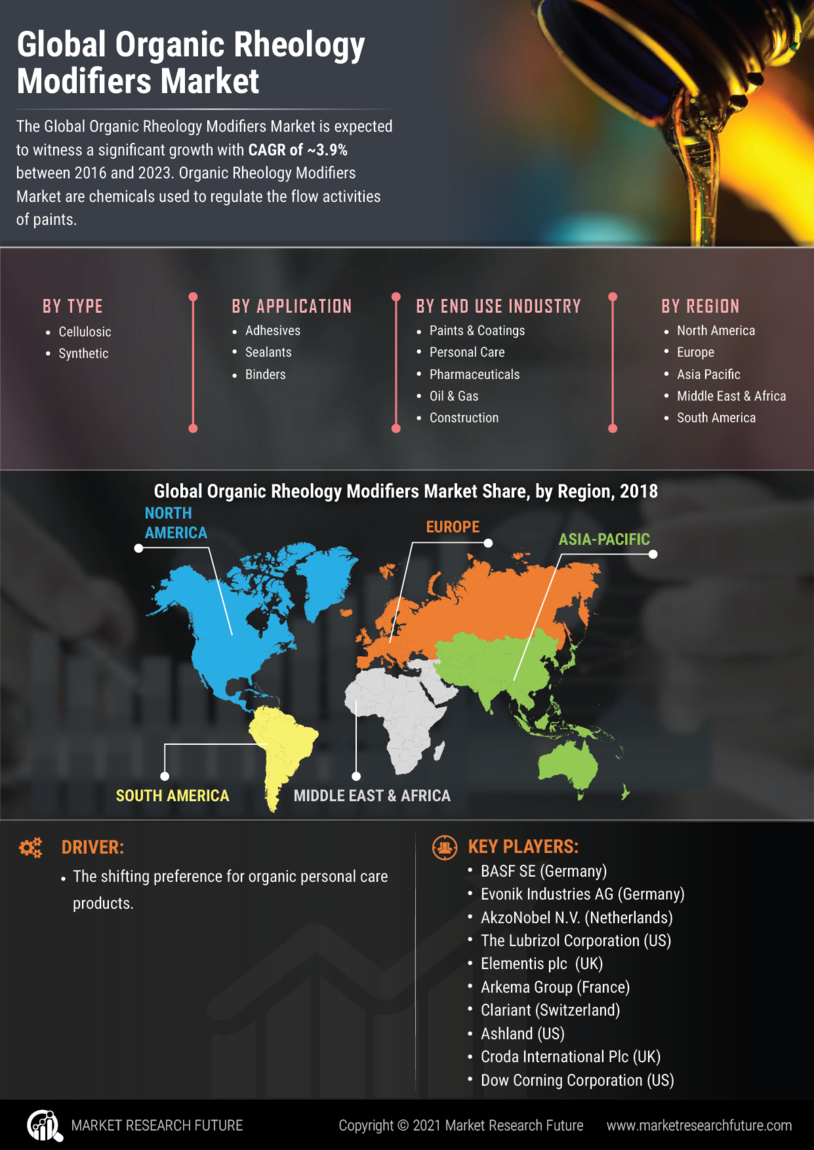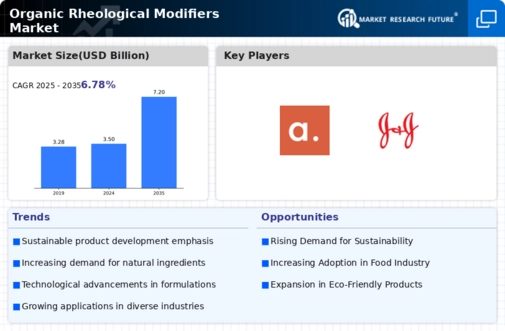Market Growth Projections
The Global Organic Rheological Modifiers Market Industry is poised for substantial growth, with projections indicating a market size of 3.5 USD Billion in 2024 and a remarkable increase to 7.2 USD Billion by 2035. This growth trajectory suggests a compound annual growth rate of 6.78% from 2025 to 2035, reflecting the increasing adoption of organic modifiers across various sectors. The rising demand for sustainable and health-conscious products, coupled with regulatory support for organic ingredients, positions the market favorably for future expansion. As industries continue to prioritize eco-friendly formulations, the organic rheological modifiers market is likely to thrive in the coming years.
Growing Demand for Eco-Friendly Products
The increasing consumer preference for sustainable and eco-friendly products drives the Global Organic Rheological Modifiers Market Industry. As awareness of environmental issues rises, manufacturers are compelled to adopt organic rheological modifiers that align with green chemistry principles. This shift is evident in various sectors, including food and beverages, cosmetics, and paints, where organic modifiers enhance product performance while minimizing environmental impact. The market is projected to reach 3.5 USD Billion in 2024, reflecting a robust demand for natural ingredients. Companies that prioritize sustainability in their formulations are likely to gain a competitive edge, further propelling market growth.
Regulatory Support for Organic Ingredients
Regulatory frameworks increasingly favor the use of organic ingredients, significantly impacting the Global Organic Rheological Modifiers Market Industry. Governments worldwide are implementing stricter regulations on synthetic additives, encouraging manufacturers to explore organic alternatives. For instance, the European Union has established guidelines that promote the use of natural substances in food and cosmetics. This regulatory support not only enhances consumer trust but also stimulates innovation in product formulations. As a result, the market is expected to expand, with projections indicating a growth trajectory that could see it reach 7.2 USD Billion by 2035, driven by compliance with these regulations.
Rising Health Consciousness Among Consumers
The surge in health consciousness among consumers significantly influences the Global Organic Rheological Modifiers Market Industry. As individuals become more aware of the health implications of synthetic additives, there is a marked shift towards organic alternatives. This trend is particularly evident in the food and beverage sector, where consumers increasingly seek products free from artificial ingredients. Organic rheological modifiers not only enhance texture and stability but also align with the health-oriented preferences of modern consumers. Consequently, this growing demand for healthier options is expected to contribute to the market's expansion, with projections indicating a potential market size of 3.5 USD Billion by 2024.
Expanding Applications Across Various Industries
The versatility of organic rheological modifiers contributes to their expanding applications across multiple industries, thereby driving the Global Organic Rheological Modifiers Market Industry. These modifiers find utility in sectors such as food, cosmetics, pharmaceuticals, and paints, where they enhance product performance and stability. For instance, in the food industry, organic modifiers improve the texture and mouthfeel of products, while in cosmetics, they provide desirable viscosity and spreadability. This broad applicability not only supports market growth but also encourages manufacturers to innovate and diversify their product offerings. As a result, the market is poised for significant growth, with projections suggesting a market size of 7.2 USD Billion by 2035.
Technological Advancements in Product Development
Technological innovations play a crucial role in shaping the Global Organic Rheological Modifiers Market Industry. Advances in extraction and processing technologies enable the development of high-performance organic modifiers that meet diverse application needs. For example, improved methods for isolating natural polymers from plant sources enhance their efficacy as rheological modifiers in various formulations. This technological progress not only increases product performance but also broadens the scope of applications across industries such as food, pharmaceuticals, and personal care. As these advancements continue, the market is likely to experience a compound annual growth rate of 6.78% from 2025 to 2035, reflecting the growing integration of technology in product development.

















Leave a Comment